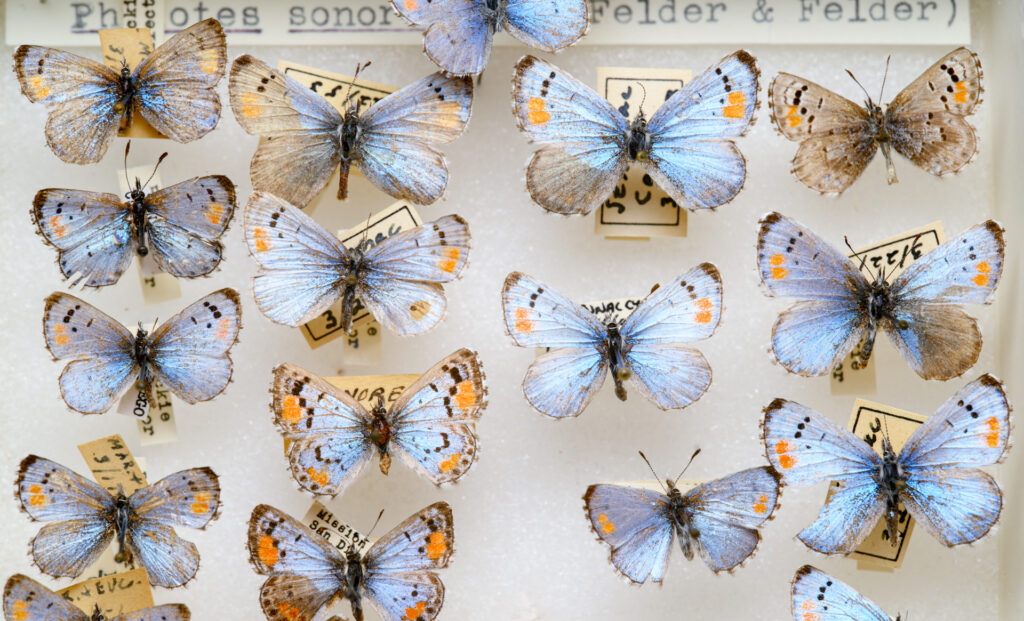Collections- or specimen-based research is generally the centerpiece of any museum, and in the context of biodiversity change, has never been more fundamentally important. Traditional uses of museum specimens include serving as material for morphological study in taxonomic research, serving as material for genetic studies (e.g., DNA sequencing, in order to understand phylogenetic and population structure), and specimens serving as vouchers, cited in research publications as the original source of material studied.
But the uses of collections in modern biodiversity research now extend far beyond the physical specimens found in any single collection. Because of specimen imaging and record digitization (bringing specimens and their associated metadata online), specimens housed in different places around the globe can form a network of connected specimen information. New technologies such as machine learning and massive trait databases can use these globally connected “extended specimens” to address fundamentally important challenges, such as understanding shifts in species’ distributions or phenology, and other biodiversity-change problems.
Investment in collections and collections-based research is a current California state priority, again reflecting drastic challenges to native biodiversity. We look forward to growing the SDSU Biodiversity Museum, increasing student research and mentorship programs, and continuing to interact with binational partners in biological studies, with an emphasis on conservation.


